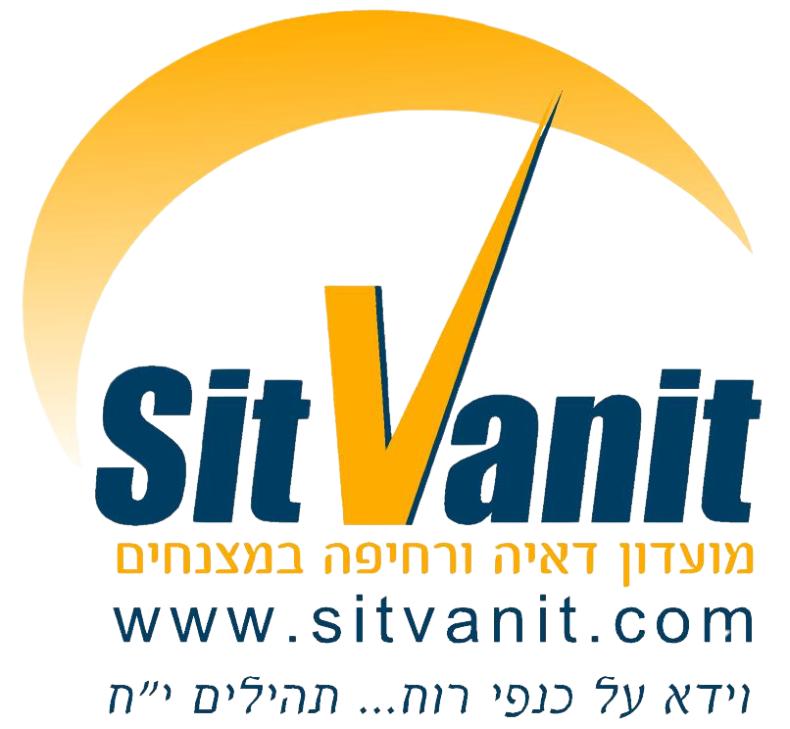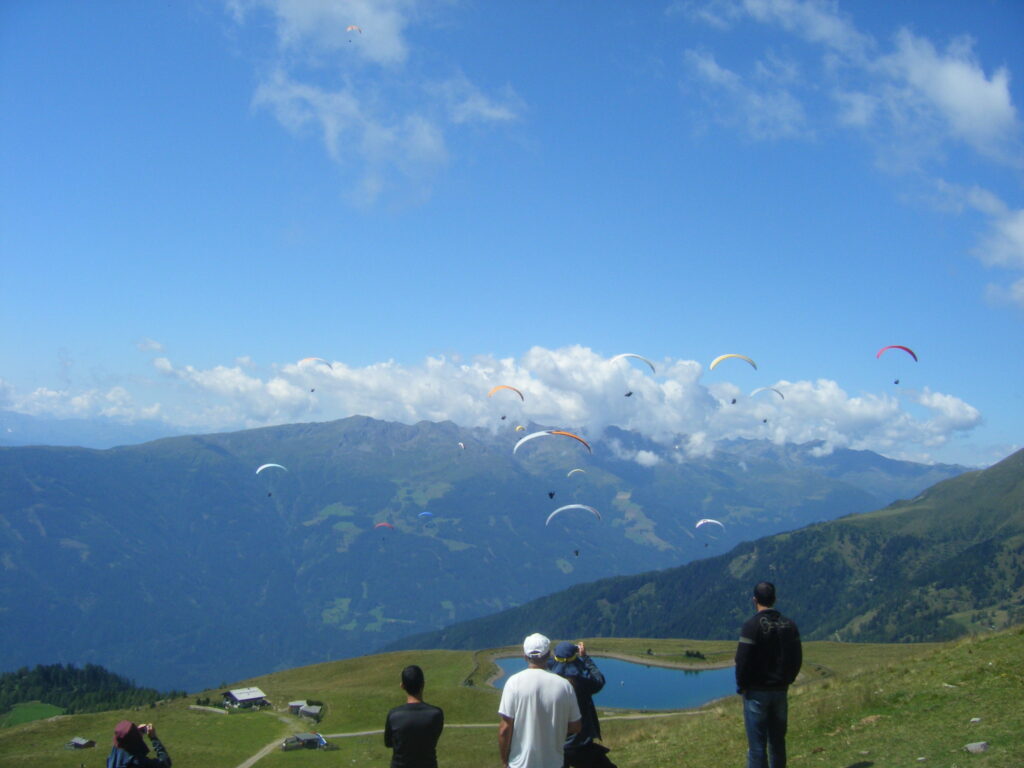General Background
Paragliding as a sport first emerged in 1988. Since then, the field has evolved to phenomenal dimensions and achievements from several aspects:
1 . The number of paraglider pilots worldwide has reached approximately 5 million in 180 countries.
2 . Paragliding equipment has achieved excellent performance and flight safety levels, with a very high performance-to-safety ratio.
3 . Significant paragliding events are held annually in all countries, including leagues, international competitions, conferences, achievement tables, and major exhibitions organized by global paragliding equipment manufacturers.
4 . The global paragliding equipment market is currently valued at over $100 million USD, solely for equipment manufacturers. There are also additional branches such as paragliding schools and paragliding tourism.
To paraglide, one needs to ascend to high places, such as mountains or hills, and from there, take off at a reasonable gliding height, utilizing warm air currents and thermals to gain altitude.
The internet and YouTube are replete with vast amounts of information, blogs, videos, instructional sites, articles, achievement tables, and more, offering endless fascinating materials for those engaged in the sport.
A key aspect of engaging in the field is the need to reach high places, like mountains, to start gliding. This presents the challenge of dependence on long trips and complex and expensive logistics to go gliding. Additionally, the dependence on weather conditions severely limits the times when activity is possible.
In some countries, the terrain is flat without hills or mountains, forcing paraglider pilots to travel to distant countries for paragliding activities. The advantage here is the opportunity to explore breathtakingly beautiful exotic locations that one might not otherwise visit.
One alternative method for takeoff is through a towing winch.
A cable from the winch attached to the paraglider pulls the parachute at a given speed, allowing the paraglider to gain height until the cable can be detached to meet thermal conditions, at the same height as a mountain or hill takeoff point.
There are several towing methods for paragliding using a towing winch:
1. Stationary winch
2. Cable-releasing winch called “pay-out winch” releasing cable from a moving vehicle.
These are the most common types, each with its pros and cons.
The stationary winch is powered by an electric motor, hydraulic motor, or gasoline engine.
The cable-releasing winch consists of a drum containing the towing cable, which is released under constant pressure by the moving vehicle to cause the paraglider to take off in a run.
The disadvantage of the cable-releasing winch is its dependence on a moving vehicle that needs a clear travel path, typically at least two kilometers long.
The cable-releasing winch is currently the most common and available, marketed in small numbers only due to the lack of a better alternative. However, there is no better alternative to date.
At Sitvanit Towing Center, we are in the final stages of test flights for a prototype electric winch with several significant advantages:
1. A powerful 2.5 horsepower electric motor capable of launching a paraglider or hang glider to thermal heights.
2. The lightweight Sitvanit winch can be moved from place to place, eliminating the need for a takeoff path.
3. The prototype development includes at least three unique patents pending registration with the World Patent Office.
4. A simple and easy-to-operate system powered by a standard wide spread 48-volt electric bike battery.
5. The winch operation is remotely controlled.
The operator carries a transmitter and remotely controls the winch throughout the flight stages.
The global market for electric winches offers very few options. All current market alternatives lack one central feature – there is no mass production or marketing of such a product. This fact can be verified by a simple Google or YouTube search. Several publications contain options for underperforming systems, typically single winches that have not matured to production and marketing stages.
Below are several significant advantages that will enable the rapid development of Sitvanit project:
1. The Sitvanit winch is simple to operate, with performance capabilities suitable for paragliding, and easy to maintain.
2. The system is affordable and available to every paraglider at the cost of paragliding equipment.
3. Uses a standard wide spread electric bike battery.
4. A simple remote-control system for all flight stages.
5. Prototype development with a concept for potential mass production.
The system is suitable for additional gliding sports:
Hang Gliding: Hang gliders share takeoff sites with paragliders. Where paragliders are found, so are hang gliders. The towing conditions required for hang gliders are identical to those of paragliders.Hang Gliders world-wide are as popular and wide spread as paragliders
Gliders (sail planes): Gliders need towing to reach heights where thermal conditions can be met. Almost exclusively, gliders worldwide are towed by airplanes. This operation is expensive, cumbersome, and requires logistics, tow pilots, a tow plane, and more.The Sitvanit winch provides an excellent solution to all these problems for gliders as well.
Here are several important points in the worldview of the final goal of the Sitvanit factory:
– Providing a solution that saves dependence on traveling to mountains and hills for paragliding. This could change the sport of paragliding worldwide.
– The possibility of mass production and distribution, low cost, simplicity, and availability will allow the product to become an essential part of every paraglider’s equipment.
– The ultimate goal is to establish the Sitvanit system as a globally recognized and accepted as a standard, due to its innovations in concept and simplicity.
Executive Summary
Company Name:** Sitvanit Towing Center
Product:** Sitvanit Electric Winch for Paragliding and Related
Sports
Location:** Currently Tel Aviv, Israel
Contact Information:**
Mr. Shimon Hanegbi
Nechama St. 7
P.O.Box 8393
Tel Aviv, 6811533
Israel
E-Mail: sitvanit7@gmail.com
Phone: 972-53-9318295
Skype: sitvanit71
Website: https://www.sitvanit7.com
Purpose:
To secure a business loan for the mass production, marketing, and
distribution of the Sitvanit Electric Winch, a revolutionary product
designed to provide efficient, cost-effective, and accessible takeoff solutions
for paragliders, hang gliders, and gliders.
Business Description
Sitvanit Towing Center specializes in the development and
production of innovative towing solutions for airborne sports. Our flagship
product, the Sitvanit Electric Winch, offers a lightweight, portable, and
powerful solution for paragliding takeoffs, eliminating the dependency on
natural elevations and complex logistics.
Market Analysis
Industry Overview:
– The global paragliding market is valued at $100 million, with
significant growth potential due to increasing participation in airborne
sports.
– Current limitations in the market include the need for specific
geographic conditions and the reliance on traditional towing methods, which are
cumbersome and expensive.
Target Market:
– Paragliders, hang gliders, and glider pilots worldwide, particularly in
regions with flat terrain.
– Paragliding schools, clubs, and tourism operators.
– Adventure sports enthusiasts seeking cost-effective and flexible
solutions.
Competitive Analysis:
– Limited competition in the electric winch market with no mass-produced
or widely marketed products.
– Existing products are underperforming, with single-unit productions and
no scalable options.
Market Opportunity:
– Sitvanit Electric Winch addresses key pain points: dependency on
natural elevations, high costs, and complex logistics.
– Potential to establish a new standard in airborne sports towing
solutions.
Product Description
Sitvanit Electric Winch
Features:
1. Powerful Motor: 2.5 horsepower electric motor capable of launching paragliders
and hang gliders to thermal heights.
2. Portability: Lightweight design, easy to transport, eliminating the
need for a dedicated takeoff sites.
3. Innovative Patents: Includes three unique patents pending registration
with the World Patent Office.
4. Battery Operated: Powered by a standard 48-volt electric bike battery.
5. Remote Control Operation: Controlled remotely, ensuring ease of use
and operational safety.
Marketing Strategy
Product Positioning:
– Positioned as an essential, innovative, and cost-effective solution for
airborne sports enthusiasts.
– Emphasize unique selling points: portability, ease of use,
affordability, and innovative technology.
Promotion Plan:
1. Digital Marketing: Leverage social media, Google Ads, and YouTube for
targeted campaigns.
2. Industry Events: Participate in paragliding events, trade shows, and
conferences to demonstrate the product.
3. Partnerships: Collaborate with paragliding equipment manufacturers,
schools, clubs, and equipment retailers for cross-promotion.
4. Content Marketing: Create engaging content, including tutorials, user
testimonials, and case studies, to build brand awareness.
Sales Strategy:
– Direct sales through our website and e-commerce platforms.
– Distribution through:
* Paragliding equipment retailers,
* Existing worldwide network of equipment dealers,
* Existing worldwide paragliding schools,
* Clubs, and tourism operators.
Operational Plan
Manufacturing:
– Outsource manufacturing to established factories with expertise in electric
motor production and assembly.
– Ensure quality control through regular inspections and adherence to
international standards.
Supply Chain:
– Secure reliable suppliers for components, including electric motors,
batteries, and remote control systems.
– Establish a logistics network for efficient distribution and delivery.
Development Timeline:
1. Phase 1: Finalize prototype testing and patent registrations (6
months).
2. Phase 2: Set up manufacturing and supply chain logistics (12 months).
3. Phase 3: Launch marketing campaign and initiate sales (6 months).
Management Team
Founder and CEO:
Shimon Hanegbi Marciano – Experienced entrepreneur with a background in
engineering and sports equipment manufacturing.
Chief Instructor and founder of Sitvanit Pargliding School and Club with
21 years of experience.
Chief Engineer: [to be recruited] – Lead engineer with expertise in
electric motor design and patent development.
Marketing Director: [to be recruited] – Marketing professional with
extensive experience in digital marketing and brand management.
Operations Manager: [to be recruited] – Expert in supply chain management
and logistics.
Financial Plan
Funding Requirements:
– Total Loan Amount Requested: 5,000,000.- USD (five million USD)
– Purpose of Funds: Manufacturing setup, marketing and promotion, initial
inventory, and operational expenses.
Projected Financials:
Revenue Projections: Based on market research and sales strategy,
expected revenue for the first year is $[250,000.- USD], with a projected
growth rate of 120]% annually.
Cost Structure: Detailed breakdown of manufacturing costs, marketing
expenses, operational costs, and R&D .
Profitability: Projected break-even within 5 Years. with net profit
margins increasing as production scales.
Repayment Plan:
– Structured loan repayment plan based on projected cash flow, with
monthly installments over 10 years. Excluding 24 months grace.
– Contingency plans for financial stability and loan repayment assurance.
Risk Analysis
Market Risks:
– Potential competition from new
entrants.
– Dependence on market adoption and acceptance.
Mitigation Strategies:
– Continuous product innovation and improvement.
– Building strong customer relationships and brand loyalty.
Operational Risks:
– Supply chain disruptions.
– Manufacturing challenges.
Mitigation Strategies:
– Diversifying suppliers and maintaining safety stock.
– Regular quality control and contingency planning.
Conclusion
WE ARE LOOKING FOR INVESTORS/PARTNERS
The Sitvanit Electric Winch represents a groundbreaking innovation
in the airborne sports market, with significant potential for growth and market
penetration.
With the requested funding, Sitvanit Towing Center is poised to
revolutionize the way paragliders, hang gliders, and gliders take off, offering
a cost-effective, portable, and efficient solution that meets the needs of
enthusiasts worldwide.
—

